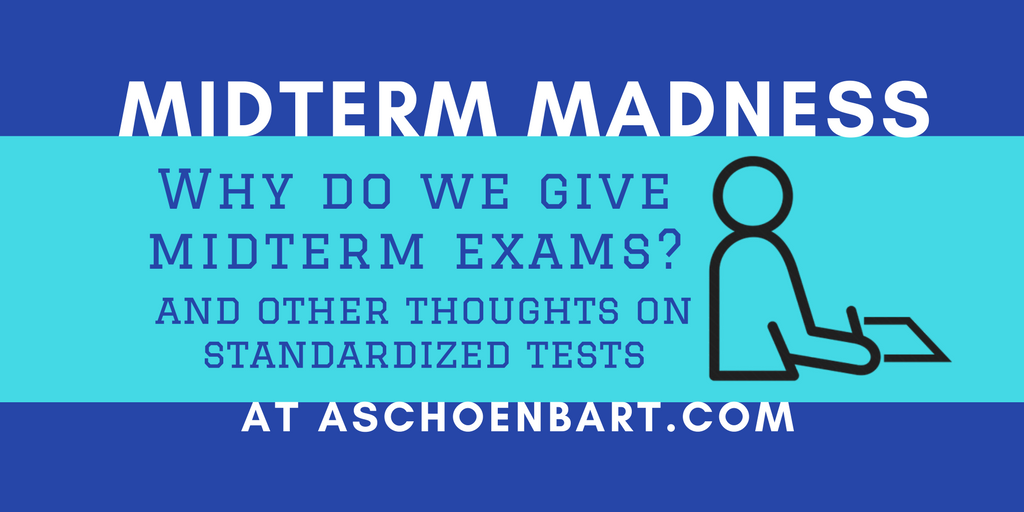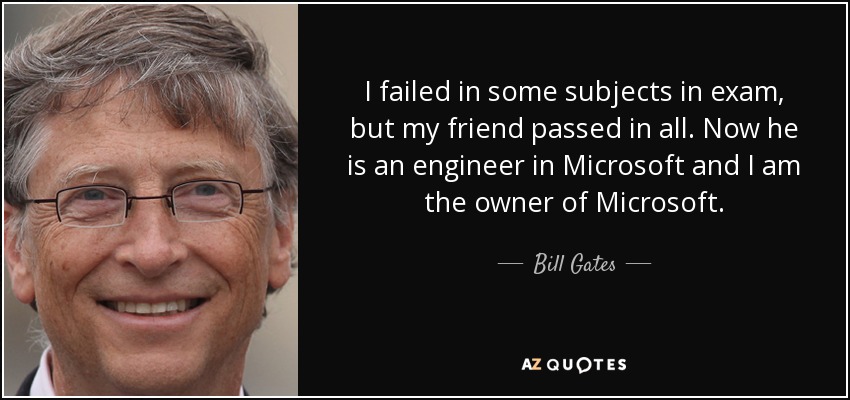Midterm Madness: Why Do We Give Midterm Exams?


So what’s the deal with midterms?
I write this mid-January, in the middle of the midterm crunch. My students have come to my class every day this week to take their English 9 and 10 midterm exams. Over two hours of testing split over four days, wiping out a week of school. Then next week, there are three days of Regents Exams and more testing--those standardized and simulated exams that really, maybe, supposedly matter.
For my students, the midterm exam counts for five percent of their final grades. The final exam is worth ten percent and each quarter twenty. As a grade level team, we develop the tests, which are aligned to our standards and curriculum. We are then assigned four class days to administer these exams.
To clarify, that’s four days for my exams, plus another week of additional testing; some students might take five tests throughout this period. Maybe more. Maybe on the same day. Add in our final exam time, which works similarly, plus pre-assessments and other mandated testing, like APPR, and that’s a lot of time.
How students feel during midterms! Meme courtesy of memegenerator.net.

NPR reports that two-thirds of Americans support annual federal testings AND think there is too much of it. They cite two different August 2016 polls, and to be fair, they ask the questions differently so conflicting results could still be valid, the point remains that there is value in testing. When it’s done right.
I like assessments that help students convey what they know and what they can do. And we know that this can be done in so many different ways. Consider the role of technology, and there’s more potential for students to demonstrate learning and growth than ever before. So why are so hung up on tests?
Tools and ideas to transform education. Sign up below.
Sure, I get the high-stakes college acceptance world of today, but is that the world of tomorrow? I know all about state mandates, test score requirements, property values, and ways we use testing data to evaluate student and teacher growth. But I wish that’s what it really did.
I work with great teachers--and I’m sure you do, too. We can design meaningful assessments. We can use data to assess learning and growth. But do we need a four day test to do it?
Image courtesy of thequotepedia.com
When my students are asked to think critically, collaborate, search, and create every day, why is a paper, pen, and scantron the best tool to now demonstrate learning? I’m not saying that we shouldn’t spend time on testing, but that there are more options out there. And when we do test, let’s make sure that we know why, and what we’re doing next. Testing data that can’t help communicate feedback for growth and demonstrate learning isn’t worth the time.

I see the value in cumulative assessments. Practice in a testing environment is valuable. Sometimes, we need to take tests in life. But the way we do it now--the stakes, the time, the loss of instruction, and the lack of follow up--just don’t work for me.
I’m not a fan of blanket statements in education, and am not advocating for a right or wrong attitude towards assessment. And if you’re reading this, I’m probably not sharing anything new for you. For most educators, testing--especially standardized testing--is a complex thing. But as best we can, let’s make sure that the decisions behind our testing and assessment are best for our students and their learning.
What are your thoughts about testing and assessment? How are these issues handled in your school? What advice do you have for making the most of testing? Share your advice in the comments on Twitter @MrSchoenbart.
Image courtesy of azquotes.com

cross posted at www.aschoenbart.com
Adam Schoenbart is a high school English teacher, Google Education Trainer, and EdD candidate in Educational Leadership. He teaches grades 10-12 in a 1:1 Chromebook classroom at Ossining High School in Westchester County, NY and received the 2014 LHRIC Teacher Pioneer Award for innovative uses of technology that change teaching and learning. Read more at The SchoenBlog and connect on Twitter @MrSchoenbart.
